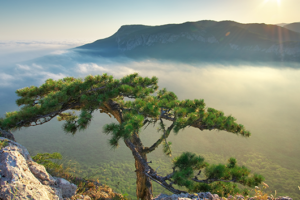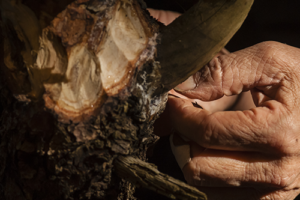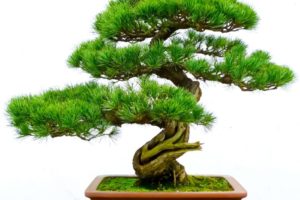Is this global warming. Or will the snow come back soon.!!!!
Thriving in the Heat
Introduction: Bonsai trees’ intricate beauty and rich history have captivated gardeners and nature enthusiasts for centuries. However, with the increasing impact of global climate change on our planet, caring for these delicate trees has become more challenging. Rising temperatures, extreme weather events, and changing climate patterns can all affect the health and well-being of bonsai trees. But fear not! In this blog post, we will explore practical tips and techniques to help bonsai enthusiasts successfully raise and care for these miniature trees in the age of global climate change.

Choose Heat-Tolerant Species: One of the first steps in caring for bonsai trees in a changing climate is to choose heat-tolerant species. Some species, such as the Japanese Black Pine (Pinus thunbergii) or the Chinese Elm (Ulmus parvifolia), are known to be more resilient to heat and can tolerate warmer temperatures better than others. Research the specific needs of the species you have or want to grow and select accordingly. Choosing a suitable species that can thrive in your local climate is a crucial step in adapting to the challenges posed by global climate change.
Provide Adequate Shade: Bonsai trees can be vulnerable to leaf burn and dehydration with rising temperatures and increased sunlight intensity. Providing adequate shade during the hottest parts of the day can protect your bonsai from excessive heat and sunlight. You can use umbrellas, cloth covers, or move your bonsai to a shaded area, such as under a tree or a shade cloth, to shield it from the scorching sun. Be mindful of the changing angle of the sun during different seasons and adjust the shading accordingly to provide the optimal amount of shade for your bonsai tree.
Increase Watering Frequency: Global climate change can increase evaporation, meaning bonsai trees may require more frequent watering. It is essential to monitor the soil’s moisture level regularly and adjust your watering schedule accordingly. Avoid letting the soil dry out completely, as this can lead to dehydration and stress for the bonsai tree. When watering, ensure that you water the tree deeply and not just the surface, allowing the water to penetrate the roots and provide adequate moisture. However, be careful not to overwater, as excessive moisture can also cause root rot. Finding the right balance and adjusting your watering routine to the changing weather conditions is critical in helping your bonsai tree thrive in the age of global climate change.
Mulch to Retain Moisture: Using mulch around the base of your bonsai tree can be a beneficial practice, especially during hot weather. Mulch acts as a natural barrier, reducing the rate of water evaporation from the soil and helping to retain moisture. Organic mulch, such as bark chips, leaves, or moss, can help regulate soil temperature, keeping the roots cool and protected from excessive heat. Mulching also aids in preventing weed growth, which can compete with your bonsai tree for water and nutrients. Apply a layer of mulch around the base of your bonsai tree, leaving a small gap around the trunk to prevent the mulch from touching the bark directly.
Ensure Proper Ventilation: In hot weather, proper ventilation is crucial for bonsai trees. Good air circulation can help reduce heat stress and promote healthy growth. Prune branches and foliage strategically to allow air to flow freely through the tree, avoiding overcrowding that can block airflow. Regularly inspect your bonsai tree for any dead, diseased, or weak branches and remove them promptly. This will improve ventilation and prevent the spread of diseases and pests. Proper ventilation is essential in maintaining your bonsai tree’s overall health and vitality in the face of changing climate conditions.
Fertilize Regularly: With global climate change affecting bonsai trees’ nutrient availability and uptake, it is essential to provide them with the necessary nutrients through regular fertilization. During hot weather, bonsai trees may require more nutrients to support their growth and combat stress. Choose a balanced fertilizer formulated explicitly for bonsai trees and apply it according to the manufacturer’s instructions. Avoid over-fertilizing, as this can lead to excessive growth and weak branches. Proper fertilization will help your bonsai tree maintain its vigor and resilience, making it better equipped to withstand the challenges of global climate change.
Monitor for Pests and Diseases: Changing climate conditions can also impact the prevalence of pests and diseases in your bonsai tree. Warmer temperatures can create favorable conditions for the growth and spread of pests, such as mites, aphids, and scales. Regularly inspect your bonsai tree for signs of pests or diseases, such as yellowing leaves, distorted growth, or unusual spots. If detected, take immediate action to control the infestation or disease. Various organic and chemical methods are available for pest and disease control, depending on the severity of the issue. Early detection and prompt action can help prevent the spread of pests and diseases and keep your bonsai tree healthy and resilient.
Protect from Extreme Weather Events: Global climate change has also led to an increase in extreme weather events, such as heatwaves, hurricanes, and droughts. These events can cause significant damage to bonsai trees. When extreme weather events are forecasted, take the necessary precautions to protect your bonsai tree. Move it indoors or to a sheltered location if possible, or cover it with a cloth or tarp to protect it from excessive heat, heavy rain, or strong winds. Be prepared to provide extra care and attention to your bonsai tree after such events. It may need additional care to recover from the stress.
Educate Yourself and Stay Informed: As global climate change continues to impact our planet, it is crucial to stay informed about the changing climate conditions in your local area. Educate yourself about the effects of global climate change on bonsai trees and learn how to adapt your care routine accordingly. Stay updated with weather forecasts, climate patterns, and any changes in the local environment that may affect your bonsai tree. Knowing about the changing climate conditions will help you make informed decisions and take proactive measures to protect and care for your bonsai tree.
Conclusion: Raising bonsai trees in the age of global climate change may present challenges, but with proper care and attention, it is still possible to cultivate healthy and thriving bonsai trees. By choosing heat-tolerant species, providing adequate shade, increasing watering frequency, mulching, ensuring proper ventilation, regular fertilization, monitoring for pests and diseases, protecting from extreme weather events, and staying informed, you can adapt your care routine and help your bonsai tree adapt to the changing climate conditions. With your dedication and efforts, your bonsai tree can continue to be a symbol of beauty, resilience, and harmony with nature, even in the face of global climate change. Happy bonsai gardening!







Leave a Reply
Your email is safe with us.
You must be logged in to post a comment.